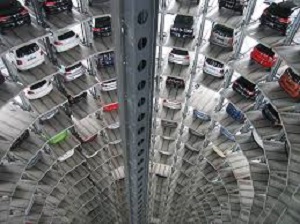Tomorrow’s smart cities will be inclusive, low-carbon, and exceptionally well-connected. David Miller explains.
As Mayor of Toronto, David Miller focused on the pillars of a low-carbon city: Improving public transportation, energy efficiency in buildings and waste handling, as well as supporting clean electricity. Now, as North American Director for the C40 Cities Climate Leadership Group, he’s focusing on harnessing the power of open data to accelerate these sustainability objectives, while keeping people at the centre of the picture.
What are the key ingredients of a smart city, and how do you measure a city’s intelligence?
I don’t think we, collectively, have agreed on a definition of “smart city” yet. To me, it means using data—either collected by a city government, the private sector, or others—to help build cities that are sustainable, low-carbon, and inclusive. We can see these elements in different cities, but things are evolving so quickly that it’s difficult to pin down exactly what constitutes a smart city today. One thing is certain: to capture the best ideas, a city government should operate on open data principles.
Which cities are using open data in this way, or starting to?
Cities that use open data, like New York and Toronto, really help empower creativity and innovation from the academic sector and from entrepreneurs. That’s exceptionally important. Applications like the various parking apps in San Francisco are creative and solve a local problem in a way that contributes to better local air quality. These kinds of innovations can happen at a much faster scale and pace to the extent public institutions allow access to their data.
When did you first understand the power of open data?
In 2010, while I was Mayor of Toronto, the Toronto Transit Commission launched Next Streetcar, a texting service. You could text and know when the next three streetcars would come at every stop in the city. About 72 hours before we were going to launch Next Streetcar, the Toronto Transit Commission opened its data sets. As a result, by the time we’d launched it, somebody had already created an app that was just as good, if not better, than ours. We found this out quite accidentally at the press conference announcing the launch, when a member of the media found the app on her mobile phone!
What else does a smart city need?
It needs an infrastructure and innovation ecosystem. Toronto, for example, has superb IT innovation. This is mostly driven by the large institutions based there—the banking sector and the presence of large IT-based organizations, such as Bell.
In the C40, we are seeing a real use of “smart technologies” to drive energy efficiency in buildings. This is very important because, in most cities, building heating and cooling is the single biggest source of carbon emissions.
Finally, we’re seeing some interesting experiments in transportation. Munich and several Chinese cities, for example, has a city bike program that uses GPS. You can just leave your bike anywhere. Sort of like Car2Go for bikes. And these systems are now coming to North America.
What kinds of technologies, or combinations of technologies, will pave the streets of the smart city?
The key is the wireless infrastructure—whether it’s broadband data, cell-phone, or open-data networks provided by the city. The smartphone, combined with Google Maps, is already enabling all kinds of interesting things today; it’s quite fascinating to watch. The real question is, how do you use that data at scale to address significant social and infrastructure issues?
There’s clearly a ton of data out there, but it seems like we’re not sure how best to put it to use. Have you got any thoughts on best practices?
I don’t think anybody is really looking at the metadata—the data about data—and how it might be used to really change decision-making when it comes to planning things like emergency services. I don’t think we’re seeing those answers. We have seen lots of little interesting innovation, but the big picture eludes us. We now have massive amounts of data. Often, it’s privately held, but it could be marshalled for significant public purpose if handled correctly.
We were waiting for you to bring up privacy!
Collectively, as a society, we’re okay with the cable and telephone companies having data about us. But because of privacy concerns, it’s sometimes hard for the government to actually get it, and use it. So, how do we build that collaboration so that we can start looking at significant transportation and movement trends in a more sophisticated way than we have in the past?
There’s huge buzz about autonomous vehicles, and electric vehicles. How might their use impact public services that use the roads – like waste management, buses, ambulances, police and fire? How can data from cell phones and other private sources give us insights that allow public services to be more efficient and safe for people? Nobody I know of has broached those topics successfully yet.
What are you hoping to accomplish in your new role as North American Regional Director for C40?
I have two roles. I’m also the Global Ambassador for Inclusive Climate Action, meaning I’m responsible for helping C40 build an international program to connect climate with socially just economic outcomes. That’s really important because, if we want people to accept the steps we need to take to make our cities more efficient and reduce carbon, we have to show everybody that they’re going to benefit. The good news is that U.S. mayors are leaders and, with the C40’s resources, we can help ensure really successful outcomes that actually create low-carbon cities there and elsewhere in the world.




